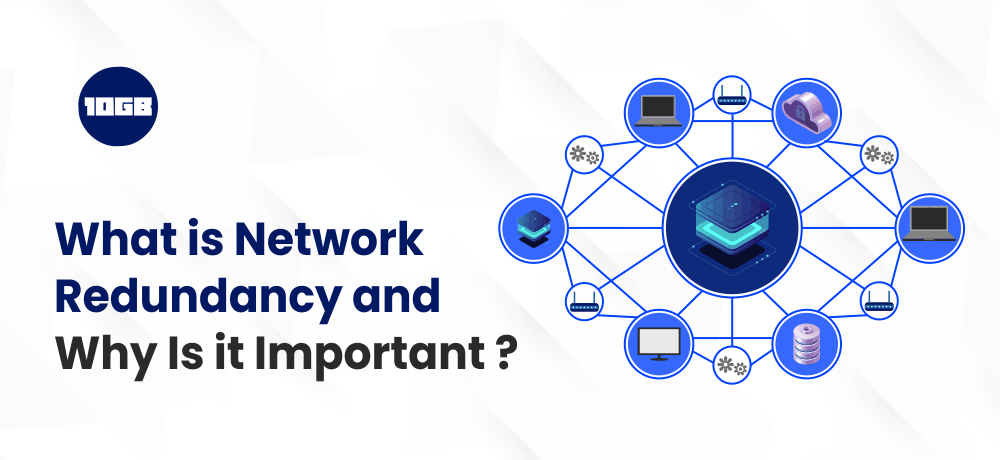In this blog post, we will be understanding what is network redundancy and why is it crucial for your business.
The evolution of the internet has forced several businesses to embrace technology to move online. The need for reliable networks has become more crucial than ever as several businesses are using their network as a medium to deliver services and products to their clients.
A network outage caused due to failure of equipment, unexpected cyberattacks, human error can be destructive for a business. Each passing moment of website downtime or crash can cost you in the form of a missed opportunity, revenue loss, and diminished brand reputation.
While you choose among colocation server hosting and dedicated hosting, you must know what kind of network redundancy systems are set up in place to secure your website against crash or downtime.
What is Network Redundancy?
Network Redundancy is the process of adding added or alternate instances of network devices to assure that a substitute path is available in case if there is a failure on the primary service.
This is how you keep your business online and minimize the risk of failure along the vital data path.
Forms of Network Redundancy
Mainly, there are two forms of network redundancy that make sure that the systems stay up and running:
Fault Tolerance
Fault-tolerant redundant system offers comprehensive hardware redundancy, mirroring of applications over two or more similar systems that run simultaneously. If anything goes wrong in the main system, the cloned backup system will take over with no downtime. Perfect for operations wherein any amount of downtime is unacceptable (like industrial or healthcare applications), fault-tolerance redundant systems are complicated and usually too pricey to be implemented.
High Availability
A software-based redundant system, high availability utilizes clusters of servers that monitor each other and have failover protocols setup in place. Hence, if any of the server goes down, the backup server will instantly take over and restart the applications that were running on the failed server. This form of network redundancy is less infrastructure intensive, however, it does bear a specific amount of downtime. There will be a small loss of service (downtime) when the backup servers boot-up the applications.
Infrastructure and Network Redundancy
One of the initial steps of a network redundancy plan is to make a network strategy that analyzes the current infrastructure. Ultimately, even the most comprehensive software redundancies won’t help you much if the servers don’t have electricity.
A standard colocation must have comprehensive backup solutions in place to assure that the power will always be accessible. Having extremely preserved UPS systems can guarantee that servers can shift over from electrical power to backup generator power without losing any of your data or applications.
How to Create an Optimal Redundancy Network?
There are various ideal practices that you can follow to create an optimal redundancy network:
Backup Data to Another Location
All your precious data should be regularly backed up and ideally to another location. A quality data center designs to clone and store data in an ideal place wherein it can be easily accessed in the event of failure of redundant systems and the primary network goes down.
Regularly Test Backup Systems
Colocation data centers regularly execute tests to evaluate the integrity of the backup system and redundant networks. They will test for distinct connections by physically disconnecting hardware to ensure that failovers occur as expected. While testing, if things don’t go as planned, data center managers will then build an after-action review that lists down the items they require to resolve which were identified with testing.
Conclusion
Redundancy is the key to maintain demanding uptime of modern day business.
10GB Hosting enterprise redundant network ensure that you have flawless hosting experience.
